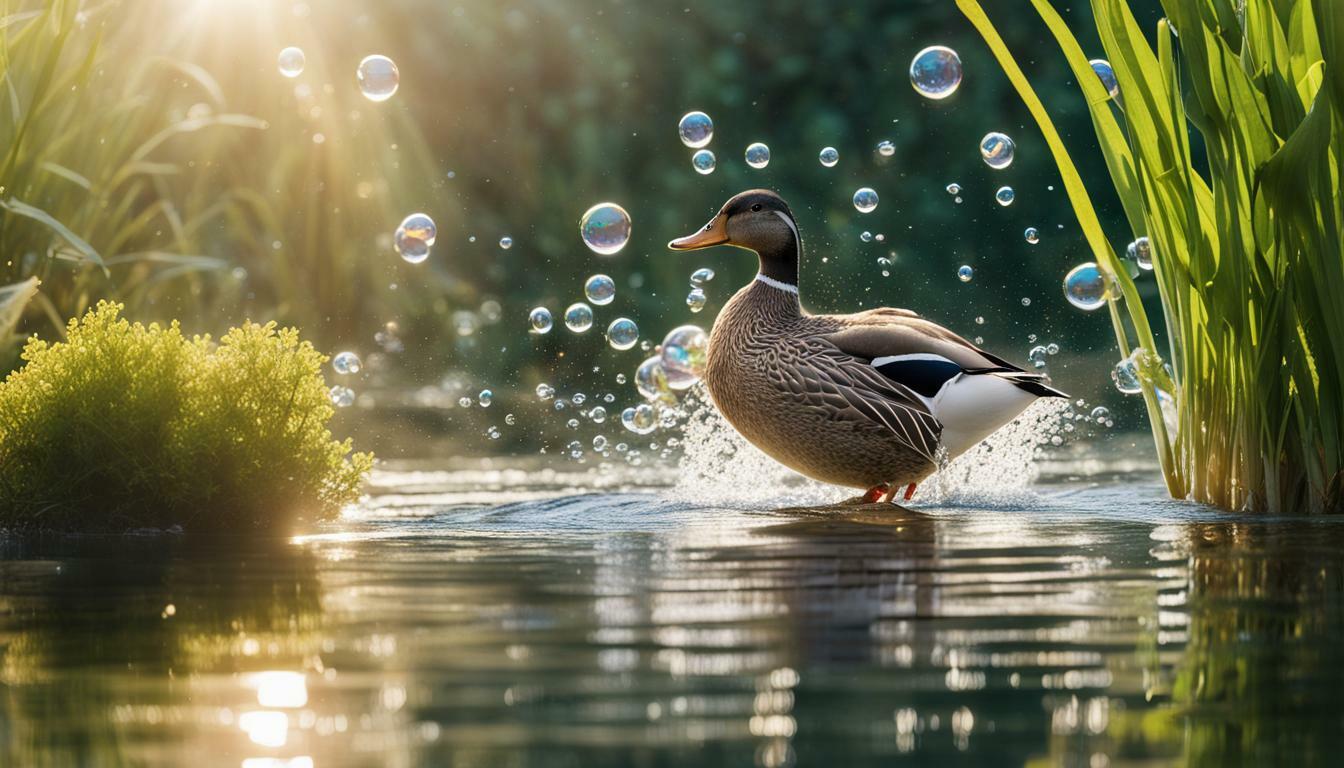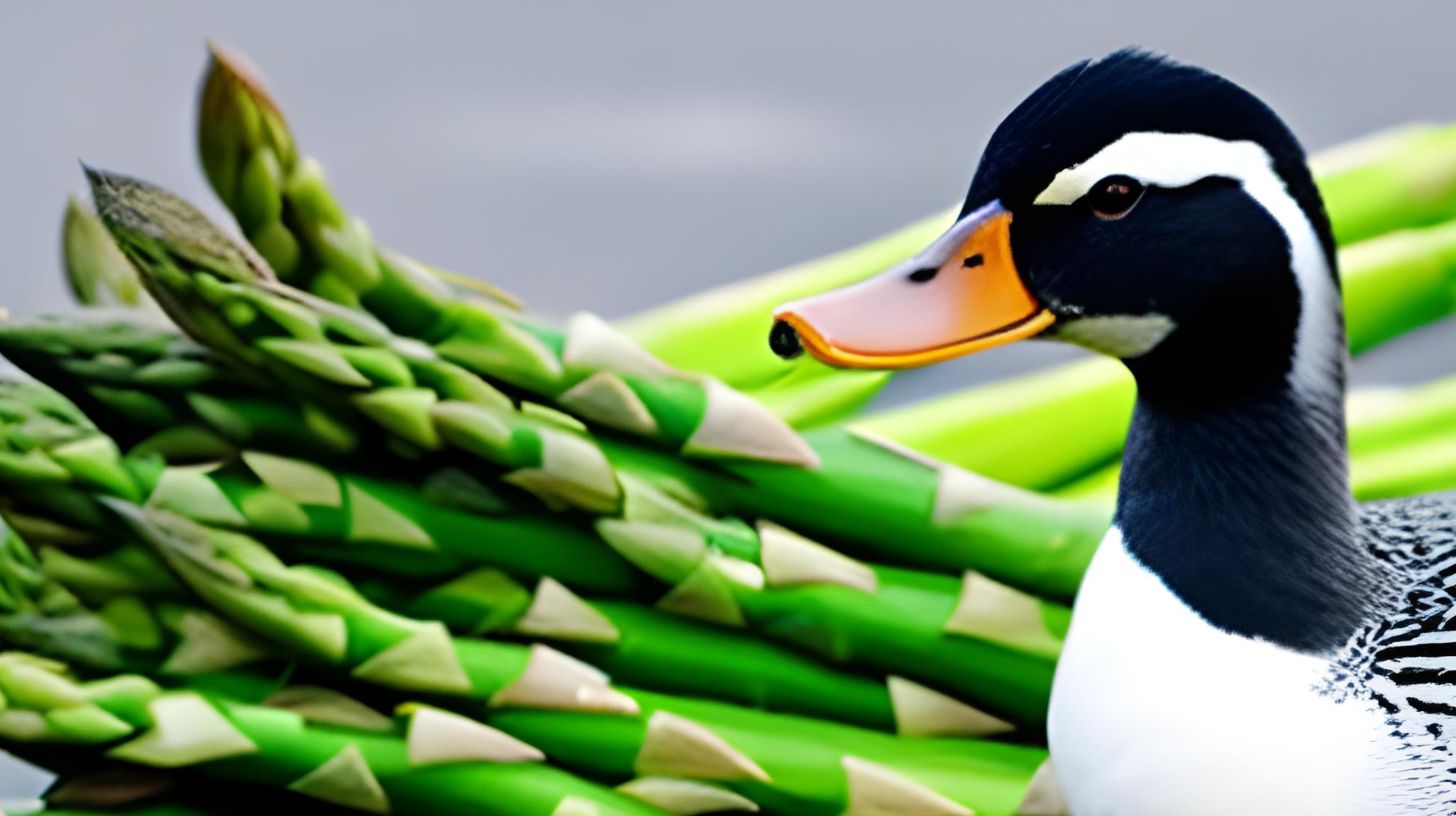How Long Can A Duck Stay Underwater? Unraveling the Mystery

Table of content:
- How Many Minutes Can a Duck Stay Underwater?
- What’s the Longest a Duck Can Stay Underwater?
- How Long Can Wild Ducks Stay Underwater?
- Can Ducks Breathe Underwater?
- How Do Ducks Hold Their Breath for So Long Underwater?
- How Do Ducks Not Drown When They Stay Underwater?
- Why Don’t Ducks Need to Come Up for Air As Often As Other Animals?
- Conclusion
Ducks are amazing waterfowl that seem to spend more time in the water than on land. Their ability to stay submerged for extended periods of time allows them to find food and evade predators. But just how long can ducks hold their breath and remain underwater? Read on to learn more about the diving capabilities of our feathered friends.
How Many Minutes Can a Duck Stay Underwater?
Most duck species can stay underwater for 2-3 minutes before needing to come up for air. They are able to do this thanks to specialized adaptations and reflexes that allow them to conserve oxygen while diving.
Mallard ducks, one of the most common duck species, typically stay underwater for 30-90 seconds at a time. During this period they are active – searching for food, avoiding predators, exploring, etc. However, in rare cases when threatened or evading danger, mallards can remain submerged for up to 4 minutes.
Other diving ducks that feed underwater are able to hold their breath even longer. Greater scaups can stay under for well over 2 minutes. The longest recorded dive for a tufted duck is a whopping 137 seconds – over 2 minutes!
So while the typical duck dive is short in duration, some species have developed the ability to remain submerged for several minutes when necessary. Their specialized physiology allows them to maximize use of oxygen stores and minimize energy use while underwater.
What’s the Longest a Duck Can Stay Underwater?
The longest recorded dive for a duck lasted an incredible 5 minutes!
This exceptional feat was accomplished by a common eider duck in Sweden. Female eiders are the deepest diving ducks, regularly descending 60 feet or more to forage on the seafloor.
During the record-setting dive, the eider duck was observed descending into a lake and staying underwater for over 5 minutes before resurfacing. Researchers attributed her remarkable diving abilities to excellent oxygen management and slowing of bodily functions while submerged.
Most duck species cannot remain underwater nearly as long. 2-3 minutes is normal for many diving ducks. Mallards tend to cap out around 2-4 minutes even when pressed.
However, eiders and other sea ducks that feed on deep lake bottoms or ocean floors are capable of pushing diving limits past 5 minutes in extreme cases. Their adaptations allow them to extract enough oxygen and slow metabolism to extend dive times.
So while most ducks won’t come close to 5 minutes underwater, specialized divers like eiders can reach impressive depths and durations exceeding the capabilities of their relatives. This helps them access food sources unavailable to other birds.
How Long Can Wild Ducks Stay Underwater?
Wild ducks have slightly better diving capabilities compared to domestic ducks due to their active foraging behaviors and flight.
On average, most wild duck species can stay underwater for 2-3 minutes before needing to surface. Some diving ducks like scaups and mergansers can remain submerged for 3-4 minutes.
The longest recorded dive for a wild duck is 5 minutes – accomplished by a common eider as discussed earlier. However, most wild ducks won’t come close to this elite duration.
Here are some typical diving ranges for wild ducks:
- Mallards – 30 to 90 seconds, up to 2-4 minutes when evading predators
- Teals – 1 to 3 minutes
- Pintails – 2 to 3 minutes
- Canvasbacks – 1 to 4 minutes
- Scaups – 2 to 5 minutes
- Eiders – 1 to 5 minutes
The diving duration depends on the situation. Short dives are typical while feeding and socializing. Longer dives occur when ducks are escaping threats, migrating long distances, or foraging in deep waters.
So while wild ducks can stay under for a few minutes at a time, they lack the highly specialized adaptations of seabirds that can hold their breath for 10 minutes or more underwater. Their oxygen stores and physiology are designed for moderate diving.
Can Ducks Breathe Underwater?
No, ducks cannot breathe underwater. They must surface regularly to breathe air into their lungs.
When diving, ducks rely on oxygen stores in their bloodstream and muscles to fuel underwater exertion. Their bodies are designed to maximize use of this finite oxygen supply.
Here’s what happens when a duck dives below the water:
- Before submerging, they take a big gulp of air to fill their lungs and air sacs. This provides an initial oxygen boost.
- As they dive, heart rate slows and blood flow is reduced to non-essential organs. This conserves oxygen for the heart, brain and muscles.
- Muscles also switch to anaerobic metabolism, producing energy without oxygen. This allows ducks to remain active underwater.
- About 2-3 minutes later, oxygen stores become depleted. Lactic acid builds up in muscles. The duck must surface to breathe again.
So while well-adapted for swimming and diving, ducks do not have special organs or adaptations that allow them to extract oxygen from water like fish. They must hold their breath, using on-board oxygen stores, until returning to the surface for their next gulp of air.
How Do Ducks Hold Their Breath for So Long Underwater?
Ducks possess several key anatomical and physiological adaptations that enable them to stay submerged for minutes at a time without breathing:
Air Sacs – Ducks have air sacs throughout their body that supplement lung capacity, storing more oxygen before diving.
Slowed Heart Rate – A duck’s heart rate drops from 250-350 beats per minute on land to just 60-80 bpm underwater. This massive reduction conserves oxygen.
Peripheral Vasoconstriction – Blood vessels near the skin tighten up to restrict blood flow to non-essential regions and reduce oxygen consumption.
Blood Shift – Oxygenated blood is shunted only to the heart, brain and muscles while diving. Other organs receive less blood to minimize oxygen use.
Anaerobic Metabolism – Muscles run on anaerobic metabolism underwater, producing ATP without oxygen. This allows ducks to keep swimming and searching for food while holding their breath.
Feather Air Layer – Special feathers trap air bubbles close to the duck’s body, increasing buoyancy and reducing energy expenditure while diving. This further minimizes oxygen requirements.
Thanks to these combined adaptations, ducks can make the most of finite oxygen stores and remain active underwater for several minutes without respiring. It allows them to access food and avoid threats that can’t be reached on the water’s surface alone.
How Do Ducks Not Drown When They Stay Underwater?
Given their ability to stay submerged for minutes at a time, you may wonder how ducks avoid drowning while underwater for so long. Ducks have several adaptations that allow them to dive and resurface safely:
Powerful Leg Muscles – A duck’s legs have strong muscles for swimming and walking along the bottom while diving. This allows active movement while submerged.
Webbed Feet – Webbing between a duck’s toes provides effective paddles for swimming and maneuvering underwater.
Streamlined Body Shape – A tapered, hydrodynamic body profile reduces drag and makes swimming and diving more efficient with less energy expenditure.
Feather Air Layer – Air trapped in the down feathers increases buoyancy, making it easier for ducks to resurface after longer and deeper dives.
Emergency Buoyancy – Special air sacs in the abdomen can be inflated to quickly increase uplift and rise to the surface in an emergency.
Directional Diving – Ducks rarely dive directly down. They plunge at an angle which allows them to resurface more easily.
Oxygen Monitoring – Receptors measure oxygen levels in the bloodstream and signal when it’s time to ascend and breathe again.
Thanks to these adaptations, ducks can safely dive underwater to considerable depths, swim effectively while submerged, and still return to the surface to breathe before they run out of oxygen. This keeps them from drowning during routine dives.
Why Don’t Ducks Need to Come Up for Air As Often As Other Animals?
Ducks can stay underwater for several minutes at a time thanks to specialized adaptations that set them apart from other birds and mammals:
- Slowed Metabolism – When diving, a duck’s metabolism and oxygen usage slows down considerably. Their bodies are highly efficient at conserving oxygen while submerged.
- Anaerobic Capacity – Ducks have a greater anaerobic capacity compared to many animals. Their muscles generate ATP without oxygen for minutes at a time through glycolysis.
- Oxygen Storage – Ducks have more blood volume per unit of body mass compared to many mammals and birds. This allows them to store more oxygen to fuel dives.
- Air Sacs – Extensive air sacs throughout the body supplement lung capacity, allowing ducks to inhale more oxygen before diving.
- Peripheral Vasoconstriction – Constriction of blood vessels in the periphery reduces oxygen loss to less essential tissues while diving.
- Fluttering Heartbeat – A duck’s heart rate slows drastically during dives, fluttering at just 60 bpm. Minimal cardiac activity requires little oxygen.
- Feather Air Layer – The layer of trapped air in their down feathers increases buoyancy, reducing diving energy needs.
Thanks to this suite of specialized adaptations, ducks use oxygen slowly and efficiently. They can remain active and explore underwater environments much longer than most terrestrial animals before needing to return to the surface for their next breath of air.
Conclusion
A duck’s ability to stay submerged for minutes at a time gives them unique access to aquatic food sources and refuge from predators. Specialized physiology allows them to make the most of finite oxygen stores while diving. With adaptations like air sacs, slowed metabolism, anaerobic muscle capacity, and more, most ducks can hold their breath 2-3 minutes underwater. Elite diving ducks like eiders can push durations past 5 minutes.
While ducks can’t actually breathe underwater, their diving capabilities far exceed those of most birds and mammals. Next time you see a duck paddle below the pond surface, remember just how long they can explore, forage and hide in their aquatic element while holding their breath!
Welcome. I’m Adreena Shanum, the proud owner of this website, and I am incredibly passionate about animals, especially poultry. I founded adreenapets.com as a labor of love, stemming from my desire to share my knowledge and experiences with poultry enthusiasts worldwide.




